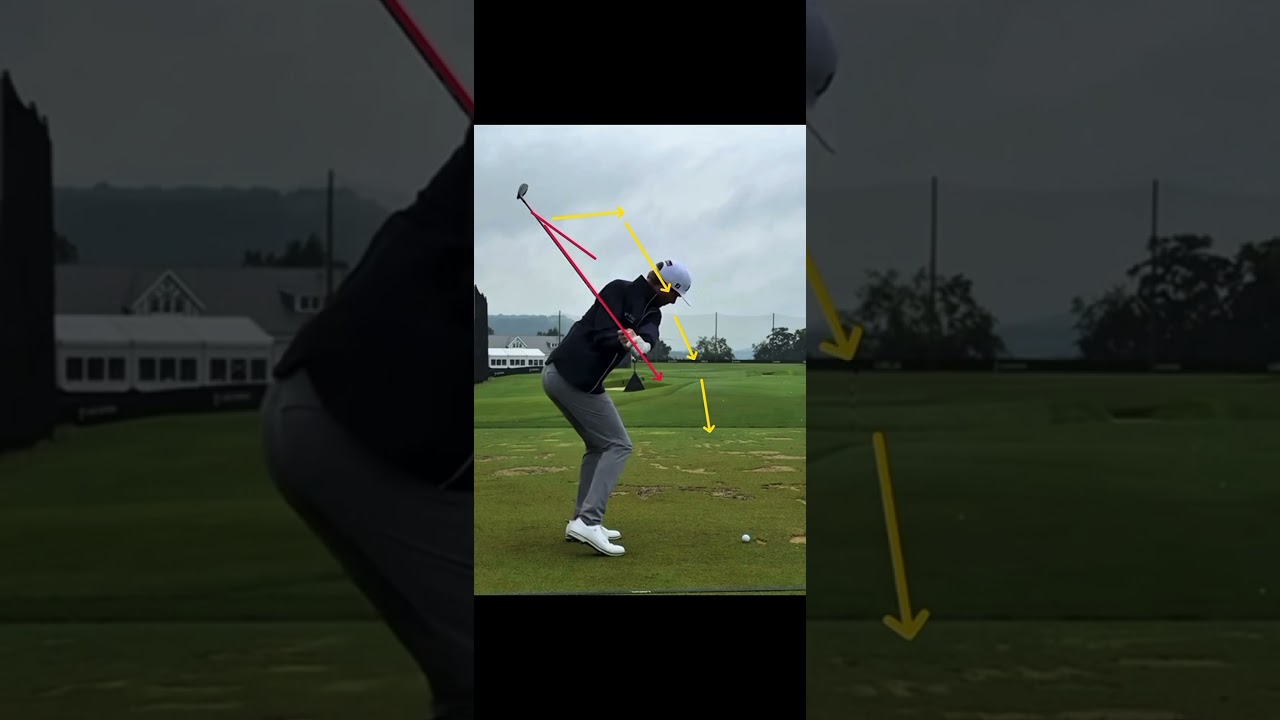somebody who obviously has a very very strong grip. When that happens, your forearms are going to be preset quite a bit towards your trail side. So, it’s pretty common from there to pull the club inside. But you’ll notice that despite the fact that the logo of his golf club is pointing up to the sky, which generally speaking will open the club face for most players. You can see that his club face is not open by any means. The toe of the club is quite down to the ground and matching his spine angle. This is because his stronger grip actually works well for his pattern. So the grip strength is offsetting what his wrists and forearms are doing at this point. Now he has quite a unique pattern in the sense that he changes knee flexes a lot which theoretically is good for the inclination of his pelvis but he doesn’t really open up his hips that much. So he doesn’t get a lot of hip depth and as a result of that his hand path is also not going to get too far behind him. It’s going to rise quite a bit. So by the time he gets to the top of the back swing you’re going to see very little hand depth. Right? The butt end of his club is kind of in line with the balls of his feet. not very far behind him. Obviously, his right pocket is staying quite internal here. So, um naturally speaking, he doesn’t have a lot of rotation of his body to help him get the hands any deeper. But the unique pattern for him is the fact that he also has a shaft alignment that is very laid off at the top, right? Not a lot of wrist set, not a lot of radial deviation as we call it. You combine that with his wrist mechanics here, the club’s going to get very, very laid off. Now, what you will see generally from most golfers, tour players or other, is that when you do get the club in this lid off a position, when you start down, this shaft is going to steepen pretty aggressively here. So, as he starts his down swing, by all accounts, this shaft is steepening to a point where it’s trying to get thrown out in front of his body. Now, when you take a golfer who’s got a lack of hand depth at the top and a shaft that steepens pretty aggressively in transition, you have to try to find a way to offset this somehow. tour players are the best at doing that, right? Their matchups, generally speaking, lead to some very, very high level ball striking. So, what you’re going to see from his situation is despite the fact that he’s rotating his hips obviously very aggressively, his chest is not going to match that same element through the golf ball. So, you’re going to see a chest that stalls out quite a bit, you’re going to see a lot of right side bend. So, the right shoulder is going to get very low through the ball. The left shoulder is going to get very high. So, you’re going to see a very vertical shoulder plane by the time he gets to impact here. Right? You can see that with these alignments. And look how much side bend he has. What is key to understand here is that a lot of what he’s doing with his chest not opening up as well as theoretically what you’ll see from some other shallower players. Right? That left shoulder is very closed off and high at this point. He has no choice to do it because that’s his way of counteracting the steepening move that he does to the pitch of the shaft at the start of the down swing. So, it’s obviously quite a unique move. He’s got a strong club face because of his grip. He’s got a shaft that steepens and wants to get thrown out in front of his body. And despite the fact that he does rotate his lower body really aggressively, his chest has to react and counteract what the the shaft movement is doing. And that’s why he gets that look with his upper body through the golf







